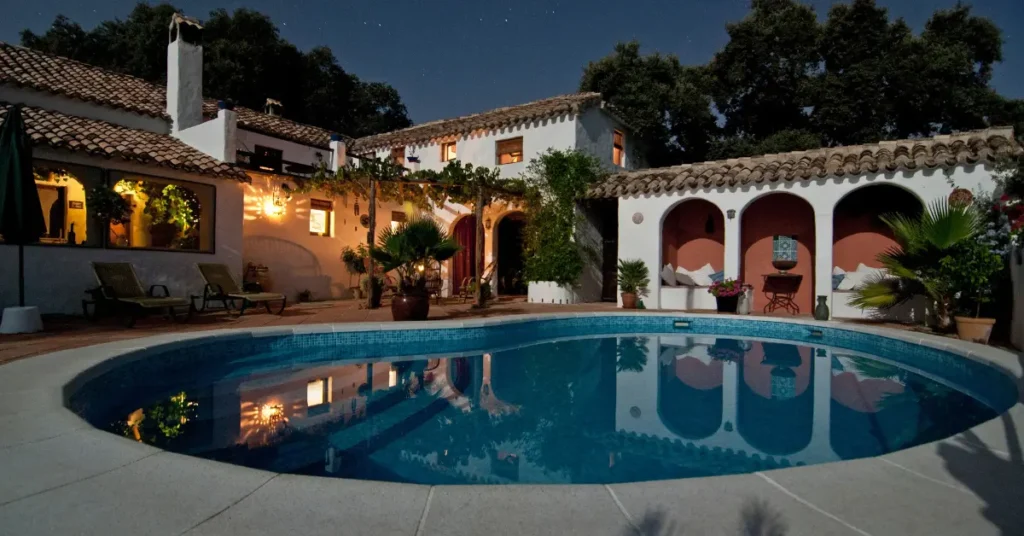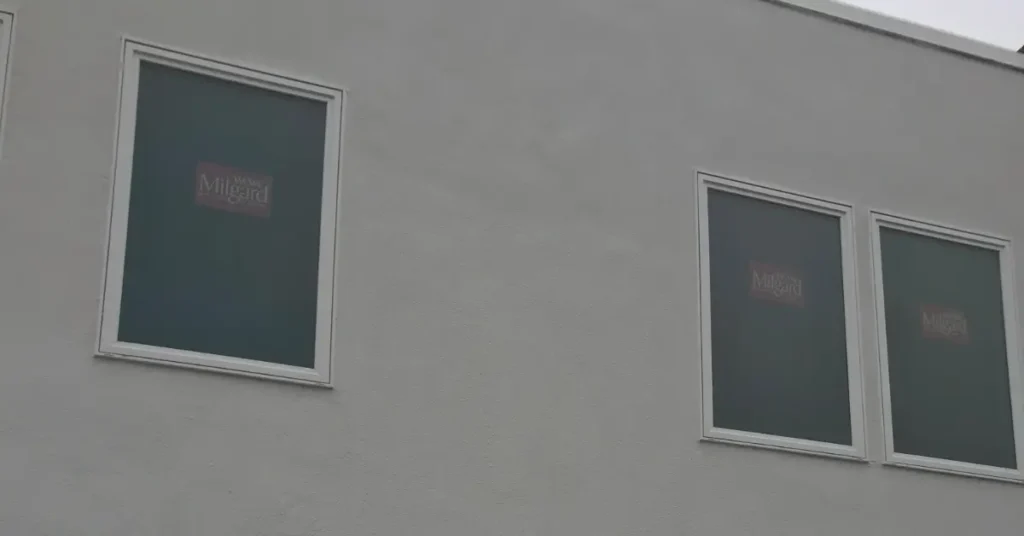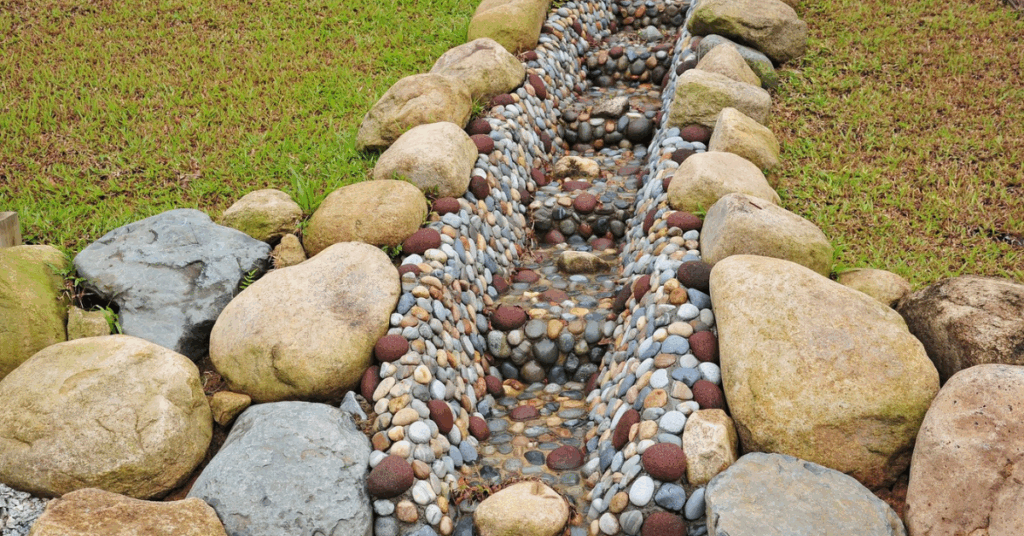People often want to polish the surface and edges of a concrete tabletop because it makes the surface smoother and more visually appealing. This improvement isn’t just for looks; it also helps show off the delicate details of the countertop’s design, like the way the aggregates are put together or any decorative elements that have been added.
In addition, the polishing process helps eliminate minor flaws and faults that can sometimes result from the casting process. Even though these flaws are often minor and hard to notice, they can make the table look less friendly and harder to use. By cleaning the concrete, these flaws are gently taken away, making the surface smoother and more uniform.
So, cleaning your concrete countertop brings out its natural beauty and gives it a gleaming sheen that makes your kitchen look and feel better. It also makes sure that there is a smooth, clean, and efficient place to work, which is essential in any kitchen. Because of this, polishing concrete counters is still an important part of keeping them in good shape so that they are both valuable and attractive in your kitchen.
Concerning kitchen design, concrete countertops have taken the interior world by storm thanks to their affordability, durability, and unique aesthetics. However, occasional polishing is a must to maintain these countertops’ shine and keep them looking like new. In this blog post, we will walk you through how to polish concrete countertops to restore and maintain their appeal.
What You'll Need to Polish Concrete Countertops
Before diving into the process, you must gather a few essential tools and materials.
Polishing concrete countertops can give your surfaces a sleek, smooth finish and is essential for a professional-looking result. Here’s what you’ll need to polish your concrete countertops successfully:
- Concrete Countertop Mix: You must have a well-cured concrete countertop before polishing. The countertop should be made from a high-quality concrete mix explicitly designed for countertops.
- Concrete Grinder: A grinder, often fitted with diamond grinding pads, is used to remove any imperfections and to smooth out the surface. Be sure to have varying grits available, starting from a coarser grit (around 50) to a wonderful grit (up to 3,000), as you’ll need to work through them to achieve the desired finish progressively.
- Concrete Polishing Pads: Similar to the grinding pads, these are used after the initial grinding stage to refine the surface further and bring out the shine. moreover, they can be found in a variety of grit levels.
- Handheld Polisher: A handheld polisher can be very useful for smaller, hard-to-reach areas.
- Concrete Densifier: A densifier is a chemical applied to the concrete to harden and densify the surface. It’s used after the initial grinding and before the final polishing.
- Safety Gear: Concrete dust can be harmful, so ensure you have safety glasses, a dust mask or respirator, and ear protection. Also, wear suitable clothing and gloves to protect your skin.
- Clean Water and Sponge or Rag: These are used to wipe down the countertop after each pass, removing any residual dust or debris.
- Sealer: After polishing, a sealer protects the concrete from stains and further wear and tear.
- Wax (optional): Some people prefer to apply a layer of wax after the sealer for an extra layer of protection and shine.
Remember, concrete polishing can be labor-intensive, requiring patience and attention to detail to achieve a smooth, glossy finish. If you’re new to concrete work, practice on a small, inconspicuous area first, or consider hiring a professional to ensure the best results.
Cleaning and Prepping the Countertop
Step 1: Clear and Clean Your Workspace
Begin by removing any items from your countertop. Then, use a non-abrasive cleaner and a soft cloth to clean the countertop surface thoroughly. Be sure to remove any grease or grime that may interfere with polishing.
The Polishing Process
Step 2: Apply the Concrete Countertop Polishing Kit
Once your countertop is clean and dry, you can begin polishing. The concrete countertop polishing kit usually comes with a set of polishing pads and a liquid polish. Start with the coarsest pad and the liquid polish, and begin polishing the concrete in a circular motion.
Step 3: Progress to Finer Grits
Progressively switch to finer grit pads as you continue polishing. The exact number of grit levels will depend on your specific kit. But in general, you’ll start with a lower number like 400 or 800 and gradually move to higher numbers like 1500 or 3000.
Step 4: Wipe and Check the Countertop
After each polishing round, wipe down the countertop with a damp cloth and check your progress. The surface should become smoother and shinier as you advance to finer grits.
Final Steps for a Brilliant Shine
Step 5: Apply Concrete Sealer
Once you’ve achieved the desired level of polish, it’s time to seal your countertop. The concrete sealer helps protect your newly polished surface from stains and wear. Apply according to the manufacturer’s instructions, ensuring you cover the entire surface.
Step 6: Buff the Surface
After the sealer has dried completely, buff the countertop using a soft cloth or a buffing pad on your polishing machine. This step will enhance the shine and smoothness of your concrete countertop.
Maintaining Your Concrete Countertops
Properly maintaining your concrete countertops will ensure they stay pristine for many years. Your polished concrete countertop should now look as good as new. To keep it looking great, make sure you:
- Regular Cleaning: Use mild, non-abrasive cleaners for daily cleaning. Avoid harsh chemicals, as they can etch the surface over time. Warm water and mild dish soap usually work well for regular cleaning. Always rinse thoroughly to avoid leaving a soap residue, and dry with a soft cloth to prevent water spots.
- Avoid Direct Heat: Although concrete can withstand high temperatures, extreme or direct heat can cause damage over time. Ensure to place hot pots and pans on heat-resistant mats or trivets to protect your countertop.
- Prevent Stains: Concrete is porous, which can absorb liquids and potentially cause stains. Immediate cleanup of spills, especially acidic substances like lemon juice, wine, or tomato sauce, can prevent staining. Also, make sure your countertop is sealed properly.
- Seal Regularly: The frequency of resealing depends on usage and the type of sealer used, but generally, it’s good practice to reseal concrete countertops every one to two years. Sealing prevents liquids from penetrating the surface and helps resist staining.
- Wax Periodically: For an extra layer of protection, consider waxing the countertop. A light coat of food-grade wax applied every two to three months can help protect the sealer and maintain the countertop’s sheen.
- Avoid Scratches: While concrete is quite durable, it’s not scratch-proof. Refrain from using sharp tools directly on the countertop. Instead, employ a chopping board for slicing or dicing activities.
- Repair as Needed: If you notice small cracks or chips, repair them quickly to prevent further damage. You can use a concrete patching compound or consult with a professional if the damage is extensive.
Proper maintenance will keep your concrete countertops looking their best and extend their lifespan. Remember that, like any other material, taking care of your concrete countertops will require a little effort, but with these tips, you can ensure they remain a beautiful and functional part of your home for years.
Don't Forget The Finishing Touches
The final touches in your concrete countertop project may seem minor, but they can significantly impact your surface’s overall look and function. Here are some finishing hints to consider:
Enhancing Your Concrete Countertop's Appeal
After polishing and sealing, consider adding a few finishing touches to further enhance your countertop’s appeal. Here are a few suggestions:
- Color: Concrete doesn’t have to be grey. You can add integral color to the mix before pouring or use stains or dyes after the countertop has cured. A broad spectrum of colors is available, from earth tones to vibrant hues.
- Aggregates: Exposing the aggregate in concrete can provide a visually appealing, textured look. For a unique aesthetic, you can use various materials, including glass, pebbles, shells, or even glow-in-the-dark aggregates.
- Veining: Similar to natural stone countertops, you can create veining in concrete countertops. The veins are usually made using a contrasting colored slurry applied after the countertop is poured but before wholly cured.
- Finishes: From matte to high-gloss, your finish can significantly impact the countertop’s overall look. A high-gloss finish can make the surface look sleek and modern, while a matte finish can provide a more natural and rustic look.
- Edge Profiles: There are various edge profiles, including bullnose, beveled, square, and ornate. Your choice of edge can complement the design of your kitchen or bathroom.
- Inlays: Consider embedding meaningful objects such as pieces of tile, glass, or even mementos into the surface. This can add a personal touch to your countertops and make them unique.
- Backlighting: For countertops made with a lighter color or with certain types of aggregate, consider installing LED lights beneath the surface to give your countertops a warm glow.
- Incorporating Functional Features: Integrating features like sinks, drainboards, or trivets directly into the countertop design can enhance your countertop’s functionality and aesthetic appeal.
Remember, one of the most significant advantages of concrete countertops is their versatility. With the ability to be formed, stained, and finished in almost limitless ways, you can create a countertop that’s genuinely unique to your space. Don’t be afraid to get creative and experiment with different design elements to enhance your concrete countertop’s appeal.
Tips for Achieving the Best Results of Concrete Countertops
- Patience with Curing: Ensure your concrete countertop has cured for at least ten days before polishing. Concrete that hasn’t fully cured is too tender for effective polishing, while concrete older than a month might give you a run for your money — making the polishing process more challenging and potentially consuming more of your polishing pads.
- Practice Makes Perfect: If you’re a newcomer to concrete countertop polishing, get your hands dirty with some practice runs. Use sample pieces or create a mock-up to hone your skills before tackling the final countertop.
- Prevent Swirl Marks: To avoid the dreaded swirl marks, it’s all about technique. Keep the polisher as flat on the surface as possible, applying steady and even pressure.
- Protect Your Surroundings: When polishing near the edges of the countertop, consider attaching a skirt to your polishing head. This can help contain the material and prevent it from reaching your ceiling.
- Water is Your Friend: Never polish your countertop dry, and always ensure ample water to cool your polishing pads. Please do so to prevent your pads from wearing out prematurely.
- Harmonize Hand and Electric Polishing: When you switch to hand-held pads, ensure you follow the same sequence you did with the electric polisher. For instance, if you polished up to a 1500 grit level with your electric polisher, the same should be maintained when you switch to hand polishing.
These guidelines will help you ensure the best results when polishing your concrete countertops, offering a smooth and beautifully finished surface that’s sure to impress.
Need a Concrete Countertop Contractor?
In conclusion, choosing the right contractor for your concrete countertop project is vital to achieving your vision for your space. It’s a matter of blending aesthetics, functionality, and budget-friendly solutions. Your quest for a reputable, reliable, and skilled contractor should end at Rhino Builders.
Why choose Rhino Builders? Our reputation precedes us. As one of the top leading concrete countertop contractors and installers in the San Francisco Bay Area, we pride ourselves on providing unparalleled service. Our craftsmanship is unmatched, and our commitment to bringing your vision to life is unwavering. From the moment you reach out to us, you’ll know you’ve made the right choice.
Remember, your countertop is not just a feature in your space; it’s an investment in your home and lifestyle. Don’t trust this critical task to just anyone; trust it to the best. If you’re in the San Francisco Bay Area and are considering a concrete countertop for your next project, call Rhino Builders. You won’t be disappointed.
Upgrade your space, transform your home, and make your dreams a reality with Rhino Builders – your top choice for concrete countertops. Contact us today, and let’s start building your vision together.







